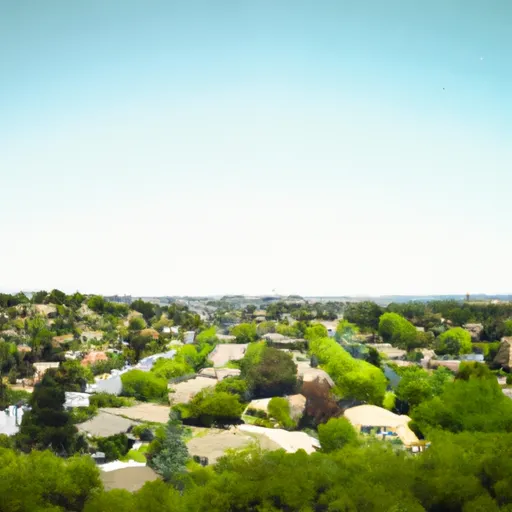-
 Snoflo Premium
Snoflo Premium
Get unlimited access to all our content
With no Ad interruptions! - Start Your Free Trial Login with existing account
Morgan-Hill
Eden Index
Climate
9.6
•
Recreation
5.7
•
Community
5.7
•
Safeguard
7.2/10

Morgan Hill is a charming city located in Santa Clara County, California. It has a Mediterranean climate, characterized by mild, wet winters and warm, dry summers. The average high temperatures range from the mid-60s Fahrenheit in winter to the mid-80s Fahrenheit in summer. The area receives about 18 inches of rainfall per year, which mainly occurs during the winter months.
Hydrologically, the city lies near the banks of the Coyote Creek, which flows through the region. Other major water bodies in the area include Anderson Lake and Chesbro Reservoir, which provide opportunities for boating, fishing, and picnicking.
Outdoor recreation is abundant in Morgan Hill, thanks to its proximity to stunning natural areas. Henry W. Coe State Park is a vast wilderness area that offers opportunities for hiking, camping, and wildlife viewing. Visitors can explore miles of trails through diverse ecosystems, including rolling hills, oak woodlands, and grassy meadows. Mount Madonna County Park is another popular destination, offering hiking trails, picnic areas, and panoramic views of the surrounding countryside.
In summary, Morgan Hill's pleasant climate, hydrological features, and nearby natural areas make it an ideal location for outdoor enthusiasts to enjoy a variety of recreational activities.
What is the Eden Index?
The Snoflo Eden Index serves as a comprehensive rating system for regions, evaluating their desirability through a holistic assessment of climate health, outdoor recreation opportunities, and natural disaster risk, acknowledging the profound impact of these factors on livability and well-being.
Climate Health Indicator (CHI): 9.6
Morgan-Hill receives approximately
535mm of rain per year,
with humidity levels near 62%
and air temperatures averaging around
16°C.
Morgan-Hill has a plant hardyness factor of
9, meaning
plants and agriculture in this region tend to thrive here all year round.
By considering the ideal temperature range, reliable water supplies, clean air, and stable seasonal rain or snowpacks, the Climate Health Indicator (CHI) underscores the significance of a healthy climate as the foundation for quality living.
A healthy climate is paramount for ensuring a high quality of life and livability in a region, fostering both physical well-being and environmental harmony. This can be characterized by ideal temperatures, reliable access to water supplies, clean air, and consistent seasonal rain or snowpacks.
Weather Forecast
Streamflow Conditions
San Francisco Bay
Area Rivers
San Francisco Bay
Snowpack Depths
San Francisco Bay
Reservoir Storage Capacity
San Francisco Bay
Groundwater Levels
Recreational Opportunity Index (ROI): 5.7
The Recreational Opportunity Index (ROI) recognizes the value of outdoor recreational options, such as parks, hiking trails, camping sites, and fishing spots, while acknowledging that climate plays a pivotal role in ensuring the comfort and consistency of these experiences.
Access to outdoor recreational opportunities, encompassing activities such as parks, hiking, camping, and fishing, is crucial for overall well-being, and the climate plays a pivotal role in enabling and enhancing these experiences, ensuring that individuals can engage in nature-based activities comfortably and consistently.
Camping Areas
| Campground | Campsites | Reservations | Toilets | Showers | Elevation |
|---|---|---|---|---|---|
| Pinto Lake Park | 28 | 119 ft | |||
| Mount Madonna | 111 | 1,583 ft | |||
| Uvas Canyon County Park | 25 | 1,098 ft | |||
| Sunset State Beach | 90 | 93 ft | |||
| Henry Coe State Park | 20 | 2,715 ft | |||
| Fremont Peak State Park | 21 | 2,768 ft | |||
| Sunol Regional Wilderness | None | 529 ft | |||
| Grant County Park | None | 1,645 ft | |||
| Coyote Lake County Park | 74 | 796 ft | |||
| Manresa State Beach | 64 | 98 ft |
Catastrophe Safeguard Index (CSI):
The Catastrophe Safeguard Index (CSI) recognizes that natural disaster risk, encompassing floods, fires, hurricanes, and tornadoes, can drastically affect safety and the overall appeal of an area.
The level of natural disaster risk in a region significantly affects safety and the overall livability, with climate change amplifying these risks by potentially increasing the frequency and intensity of events like floods, fires, hurricanes, and tornadoes, thereby posing substantial challenges to community resilience and well-being.
Community Resilience Indicator (CRI): 5.7
The Community Resilience Indicator (CRI) recognizes that education, healthcare, and socioeconomics are crucial to the well-being of a region. The CRI acknowledges the profound impact of these elements on residents' overall quality of life. By evaluating educational resources, healthcare accessibility, and economic inclusivity, the index captures the essential aspects that contribute to a thriving community, fostering resident satisfaction, equity, and social cohesion.

